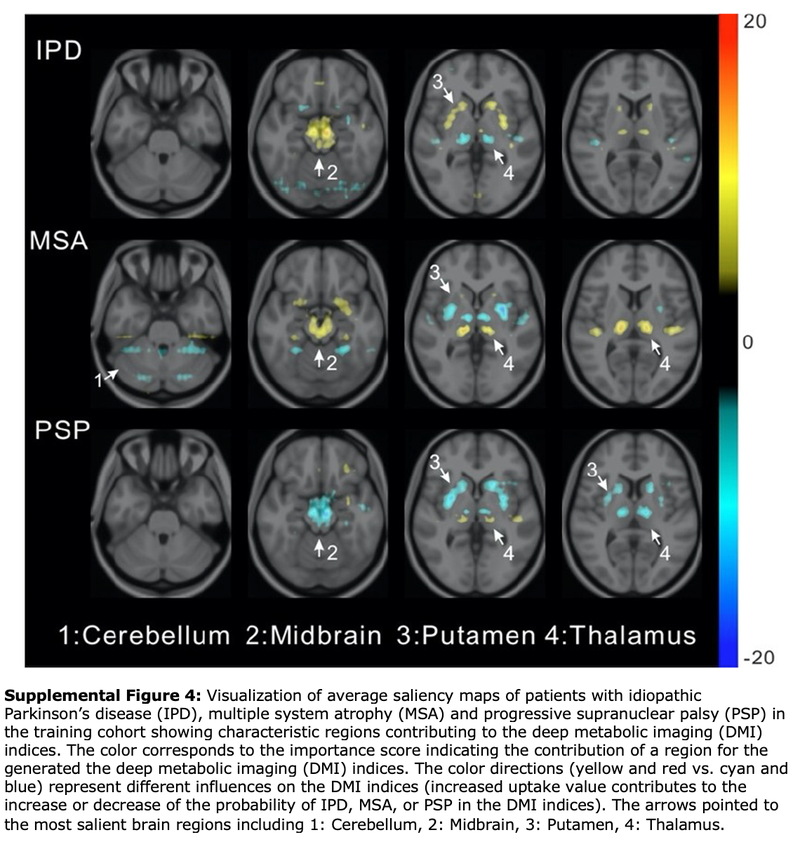Deep-Learning Method Aids in Diagnosing Parkinsonian Diseases
 Using a 3D deep convolutional neural network to extract deep metabolic imaging indices from 18F-FDG PET scans, scientists can effectively differentiate between Parkinson’s disease and other parkinsonian syndromes, such as multiple system atrophy and progressive supranuclear palsy. The research was published ahead of print in The Journal of Nuclear Medicine.
Using a 3D deep convolutional neural network to extract deep metabolic imaging indices from 18F-FDG PET scans, scientists can effectively differentiate between Parkinson’s disease and other parkinsonian syndromes, such as multiple system atrophy and progressive supranuclear palsy. The research was published ahead of print in The Journal of Nuclear Medicine.
Accurate diagnosis of Parkinson’s disease is often a challenge—particularly in the early stages—as its symptoms overlap considerably with those of other atypical parkinsonian syndromes. According to the Parkinson’s Foundation, more than 10 million people worldwide live with the disease, making it one of the most common neurodegenerative disorders.
“Studies show that 20 to 30 percent of patients with initial diagnoses of Parkinson’s disease were subsequently demonstrated to have multiple system atrophy or progressive supranuclear palsy after pathological examination,” said Ping Wu, MD, PhD, neuroradiologist at PET Center, Huashan Hospital, Fudan University in Shanghai, China. “Therefore, the development of accurate indices to differentiate between parkinsonian diseases is of great importance, specifically with regard to determining treatment strategies.”
To achieve this objective, researchers built a 3D deep convolutional neural network, known as the Parkinsonism Differential Diagnosis Network (PDD-Net), to automatically identify imaging-related indices that could support the differential diagnosis of parkinsonian diseases. This deep learning method was used to examine parkinsonian PET imaging from two groups: more than 2,100 patients from China and 90 patients from Germany.
“It’s important to note the steps that were taken to improve the trustworthiness of the study,” said Dr. Wu. “We utilized the largest benchmark dataset of parkinsonian patients with FDG PET from Huashan Parkinsonian PET Imaging database in Shanghai, China, and conducted extensive testing on longitudinal data. In addition, we studied the German cohort to include external data representing different ethnicities and examination protocols.”
The deep metabolic imaging indices extracted from PDD-Net provided an early and accurate method for the differential diagnosis of parkinsonian syndromes, with high rates of sensitivity and specificity for Parkinson’s disease, multiple system atrophy, and progressive supranuclear palsy.
“This work confirms that the emerging artificial intelligence can extract in-depth information from molecular imaging to enhance the differentiation of complex physiology,” Dr. Wu said. “Deep learning technology may help physicians maximize the utility of nuclear medicine imaging in the future.”
